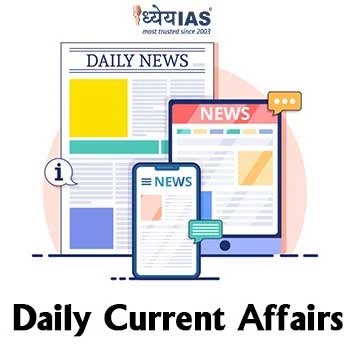Indra 2020
Why in NEWS?
- Amid high operational alert by the Indian Navy in the Indian Ocean Region (IOR) India and Russia are scheduled to hold the bilateral naval exercise, Indra 2020, in the Andaman Sea, close to the strategic Strait of Malacca.
About
- India pulled out of the Kavkaz military exercise in Russia owing to ongoing tensions with China, but the navies of the two countries would now hold joint manoeuvres near the Andaman and Nicobar Islands on September 4-5, coinciding with defence minister Rajnath Singh’s Moscow visit.
- INDRA NAVY-2020, earlier planned in Vladivostok has been postponed due to Covid- 19 pandemic situation. Russian Navy has instead proposed conducting a “non- contact, at sea only” Passage Exercise (PASSEX) to maintain the continuity of engagements between the two Navies.
- INDRA NAVY-2020 is planned as PASSEX on September 4-5, during the passage of Russian Navy ships from Hambantota to Malacca Straits in the Bay of Bengal.

Exercise Indra
- It is a joint, tri-services exercise between India and Russia
- India-Russia (INDRA) Exercises between the Army, Navy and Air Force of the two countries have been held since 2005.
- Joint Tri-Services Exercises ‘INDRA’ are also being held once in two years since 2017. The last INDRA Tri-Services Exercise was held in India in December 2019.
- Company sized mechanized contingents, fighter and transport aircraft, as well as ships of respective Army, Air Force and Navy, participate in this exercise of ten days duration.
National Crime Records Bureau (NCRB)
Why in NEWS?
- NCRB releases annual report on suicides and accidental deaths
About
- The cases of suicide and the number of accidental deaths registered an increase across the country last year compared to 2018, according to the annual National Crime Records Bureau report.

Major Findings
- The maximum cases of mass/family suicides were reported from Tamil Nadu (16), followed by Andhra Pradesh (14), Kerala (11) and Punjab (9) and Rajasthan (7).
- Suicides in the country went up slightly from 1,34,516 to 1,39,123.
- Of the 97,613 male suicides, the maximum were daily wage earners (29,092)
- Of the 41,493 females, over half were housewives.
- Suicides by unemployed persons amounting to 14% were in Kerala (1,963), followed by 10.8% in Maharashtra, 9.8% in Tamil Nadu, 9.2% in Karnataka and 6.1% in Odisha.
- Majority of suicides by those in business activities were in Maharashtra (14.2%).
- Majority of victims engaged in farming sector were reported in Maharashtra (38.2% of 10,281).
- The suicide rate in cities (13.9%) was higher compared to the all-India average.
- ‘Family problems (other than marriage related problems)’ (32.4%); ‘marriage related problems’ (5.5%); and ‘illness’ (17.1%) accounted for 55% of the total suicides. The overall male-female ratio was 70.2:29.8.
- Suicide by ‘hanging’ (53.6%), ‘consuming poison’ (25.8%), ‘drowning’ (5.2%) and ‘self-immolation’ (3.8%) were the prominent means.
- The majority of suicides were reported in Maharashtra (18,916).
- The States and UTs registering significant percentage increase were Bihar (44.7%), Punjab (37.5%), Daman & Diu (31.4%), Jharkhand (25.0%), Uttarakhand (22.6%).
- The highest percentage decrease was in Lakshadweep (100%) followed by Himachal Pradesh (21.1%).
- The maximum cases involving government servants were reported in Tamil Nadu (200 of 1,684).
- Majority of suicides by those in private sector were in Maharashtra (1,807 of 8,730)
- Total student victims, 14.4% were from Maharashtra (1,487).
- Accidental deaths-
- Accidental deaths in the country increased by 2.3%. Compared to 4,11,824 in 2018, the figure stood at 4,21,104 last year.
- The rate (per lakh population) increased from 31.1 to 31.5.
- The maximum casualties of 30.9% was reported in the 30-45 years age group, followed by 26% in the 18-30 years’ age group.
- The highest rate was reported from Puducherry (72.8)
- Maharashtra reported the highest deaths (70,329), amounting to nearly one- sixth of the total figure.
- In accidents due to other causes, 7,01,324 cases were reported, while 4,12,959 persons died and 4,46,284 persons were injured.
- The male-female fatality ratio was 80.9:19.1.
- The major causes were ‘traffic accidents’ (43.9%), ‘sudden deaths’ (11.5%), ‘drowning’ (7.9%), ‘poisoning’ (5.1%), ‘falls’ (5.1%) and ‘accidental fire’ (2.6%).
- Uttar Pradesh reported maximum cases of railway crossing accidents (851), accounting for 47.5% of total cases.
- Chandigarh reported the highest percentage increase (71.1%) in total accidental deaths.
- The highest decline was noticed in Nagaland (26.7%).
- The 53 megacities reported 61,404 accidental deaths — the maximum of 9,246 in Mumbai, followed by Delhi (4,516), Bengaluru (4,016), Pune (3,949), Jaipur (2,628) and Surat (2,353)
About the National Crime Records Bureau
- The NCRB is an Indian government agency responsible for collecting and analysing crime data as defined by the Indian Penal Code (IPC) and Special and Local Laws (SLL).
- NCRB is headquartered in New Delhi and is part of the Ministry of Home Affairs (MHA).
- NCRB was set-up in 1986 to function as a repository of information on crime and criminals so as to assist the investigators in linking crime to the perpetrators.
- It was set up based on the recommendations of the National Police Commission (1977-1981) and the MHA's Task Force (1985).









